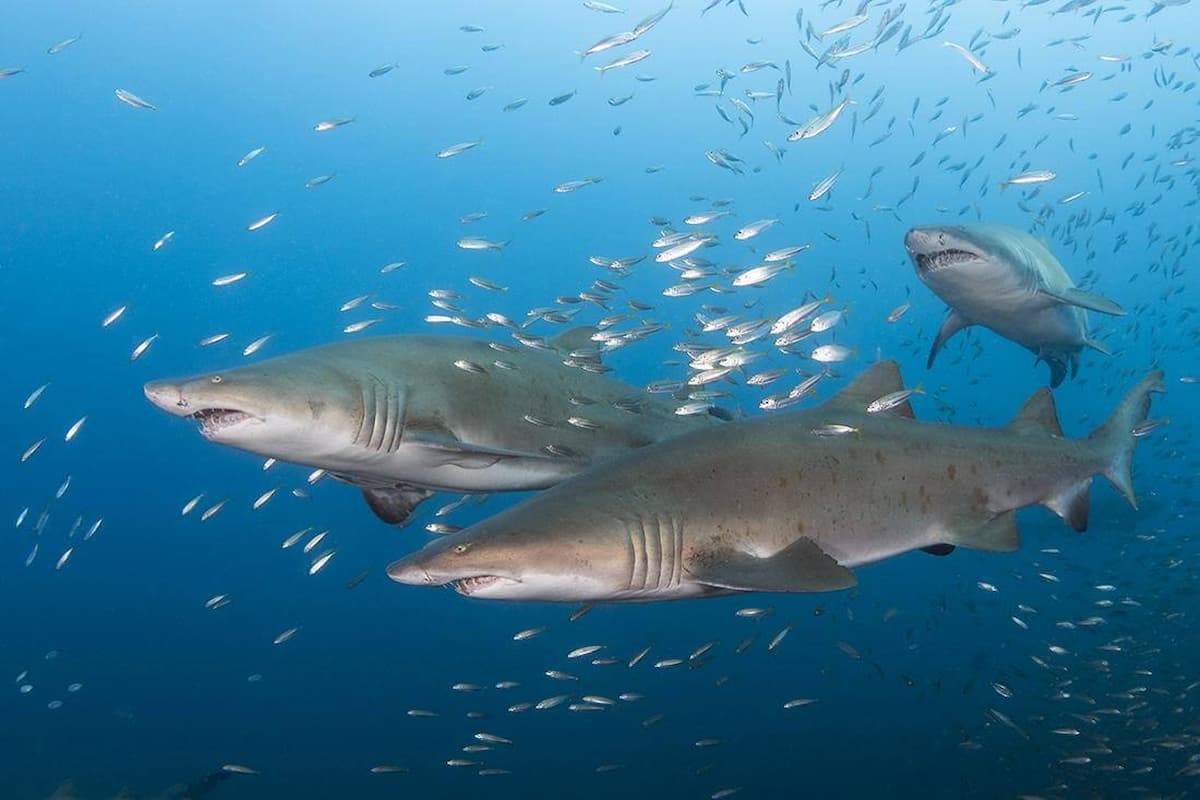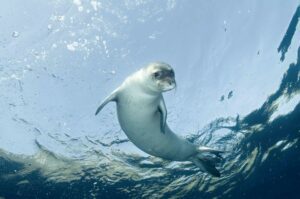If you have never met a sand tiger shark you really don’t know what you’re missing.
Despite their nightmarish appearance, sand tigers (Carcharias Taurus)-not to be confused with the tiger shark (Galeocerdo cuvieri) – typically pose no threat to divers. While many sources still list this species of shark among the top ten most dangerous sharks (ranking 9th), the veracity of this ranking is highly questionable.
According to the International Shark Attack Files database, which goes back to the early 1900’s, there have been relatively few documented attacks on humans. In total, ISAF records account for only 29 unprovoked attacks by sand tigers worldwide, with only two resulting in fatalities.
Even knowing this, divers are apt to feel a tinge of adrenaline the first time they come face-to-face with one of these snaggle-toothed beasts. Anxieties typically fade after a few minutes, however, as it becomes plain that the sharks are either wary of or disinterested in diver activity.
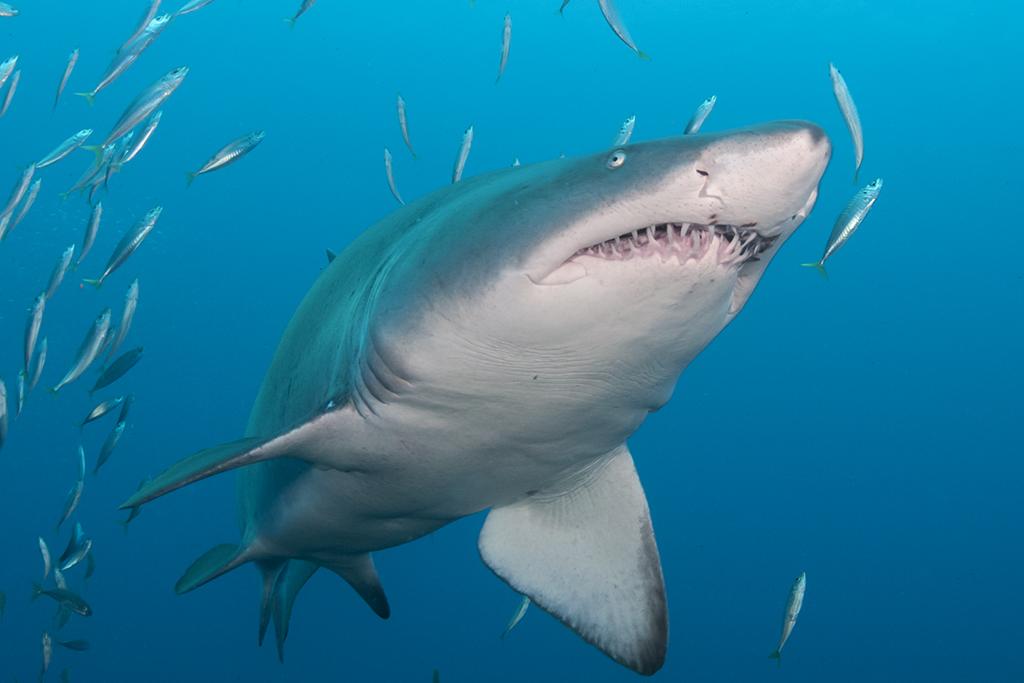
One feature I find entertaining about these large-body sharks, which can reach lengths of nine feet, is that the rest of their physique does not exactly match the body. Pectoral fins are short and fleshy, with their dorsal fin position fairly far back, closely followed by an almost equally sized secondary dorsal fin. Like the rest of the body, the base of the tail is stocky where it joins an asymmetrical caudal fin with a short ventral lobe. Take away the head, and the frame on a sand tiger would compare to a mako shark similar to how a cargo plane would to an F-16 fighter.
As to how these animals earned the moniker of sand tiger, well, we can blame that one on marketing. Belonging to the Family Odontaspididae, sand tigers were originally called sand sharks. When this species was added to an exhibit at the country’s first oceanarium, the John G. Shedd Aquarium in Chicago, the promoters added “tiger” to the name, taking advantage of the shark’s fearsome dentition.
Personally, I favor the South African name ragged-tooth (a related species to sand tigers), or “raggie” for short as it is more descriptive of this shark. Australia on the other hand calls theirs a grey nurse. Go figure.
Fantastic sharks and where to find them
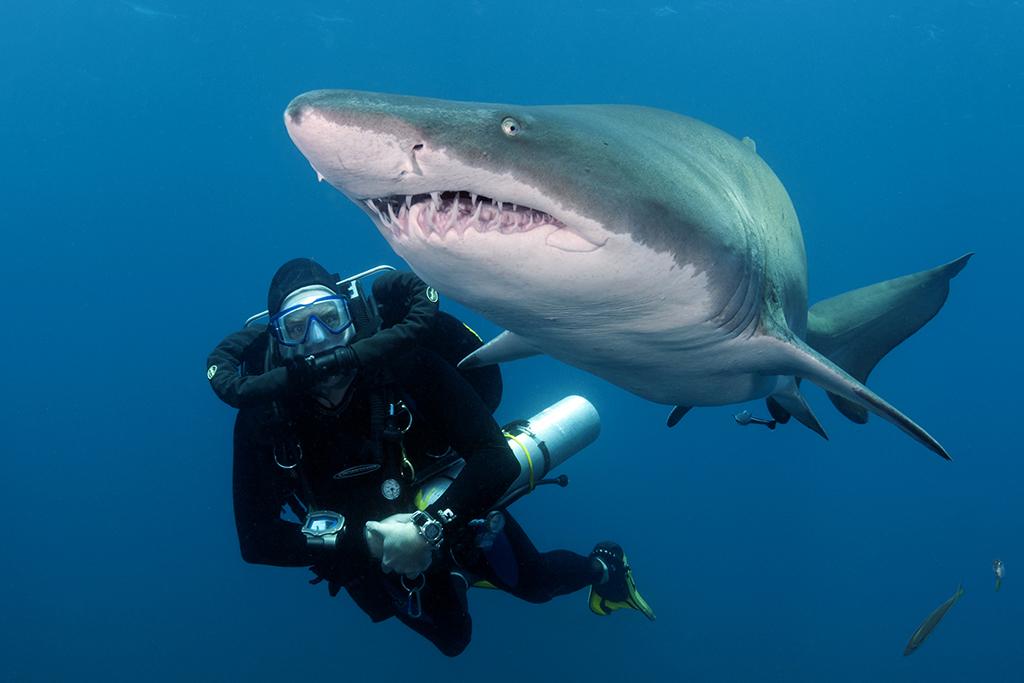
Sand tiger sharks were once widely distributed along the Atlantic coastal waters of both North and South America, Europe, and parts of the Mediterranean, as well as southern Australia, South Africa, India, China and Japan. Unfortunately, their numbers have been decimated throughout most of its range by over-fishing practices. To add insult to injury, the shark’s deceptively ferocious appearance has made them routine targets for overzealous power-head armed sport divers in the waters of Australia and South Africa.
The US National Marine Fisheries Service designated sand tigers as a Federally protected species in April 1997, as did Australia within the same year. As a result, sand tiger populations have rebounded significantly along the US North Carolina coast, and the best place to find them is on or near the region’s wrecks.
Some of the wrecks publicized as prime sites for sand tigers include the Papoose, a huge freighter sunk in 120 feet of water during the war and the Spar, a former 85-foot US Coast Guard Ice Breaker sunk in 110 feet of water in 2004 as part of North Carolina’s Crystal Coast artificial reef program. But my personal favorite for meeting these fantastic snarly tooth denizens is the is the wreck of the Caribsea.
Like the majority of the 20th century wrecks of the Carolina coast, the Caribsea was one of the many victims claimed by Germany’s infamous U-bootwaffe (U-boat fleet) as it prowled the US coastline during the Battle of the Atlantic. In the case of the Caribsea, a 261-foot merchant class ore freighter loaded with manganese was inbound for Norfolk, Virginia when it was torpedoed by the U-158 on March 11, 1942 off the north side of the shallow banks of Cape Lookout, North Carolina.
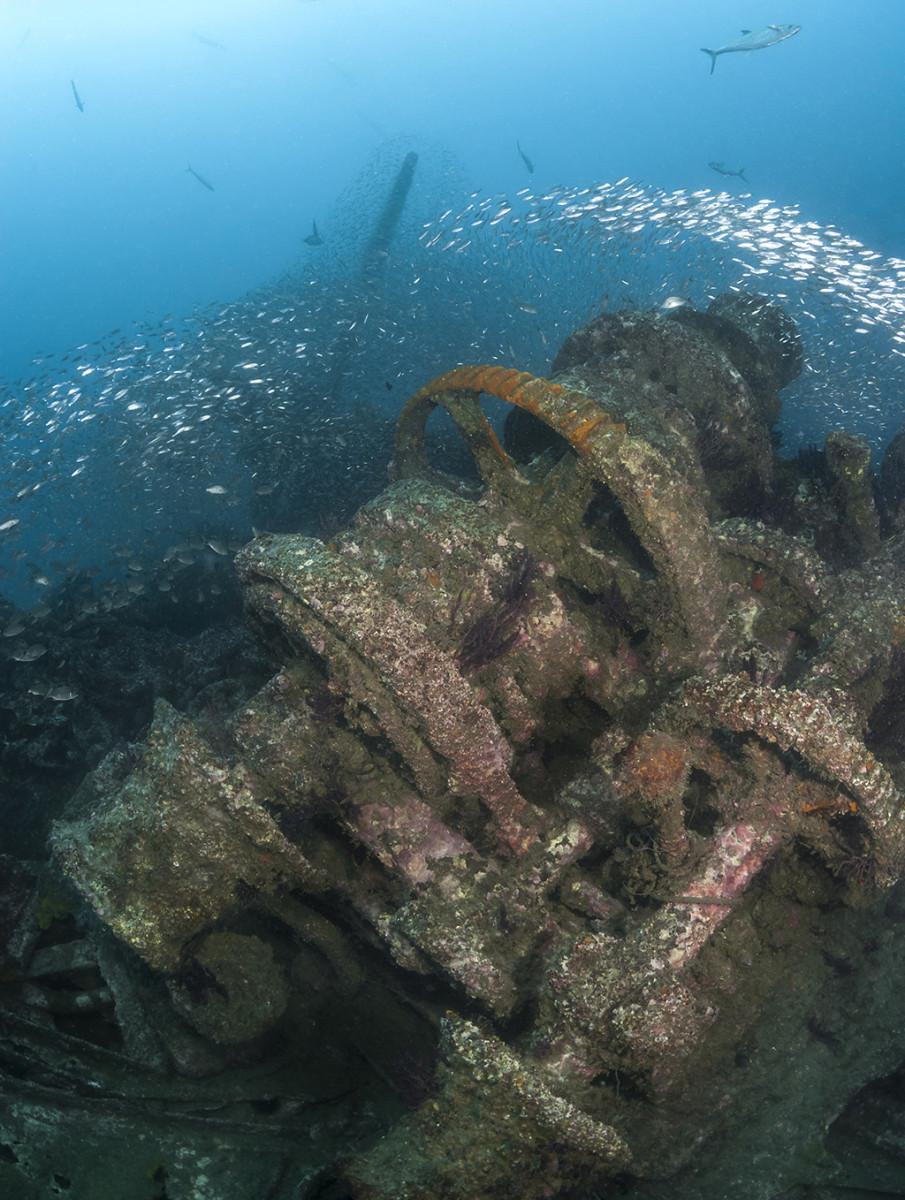
Struck by two torpedoes mid-ship on the starboard side, the Caribsea sunk in under three minutes. Unable to launch the ship's lifeboats, only seven of her 28-man crew survived their 10-hour immersion before being rescued by a passing freighter, the SS Norlindo.
If that wasn’t enough for the Caribsea, twelve days later an anti-submarine patrol plane mistook the freighter’s mast for a U-boat periscope, precipitating a depth charge attack. Two years later the wreck was further demolished by a Navy Salvage Service to ensure there was a proper depth clearance of 40 feet to make the wreck non-hazardous to navigation.
The result rendered the once substantially tall wreck to basically an elongated pile of steel rubble with part of its bow section and the windlass on top; the Caribsea’s steam engine and two giant boilers are now the highest points on the wreck.
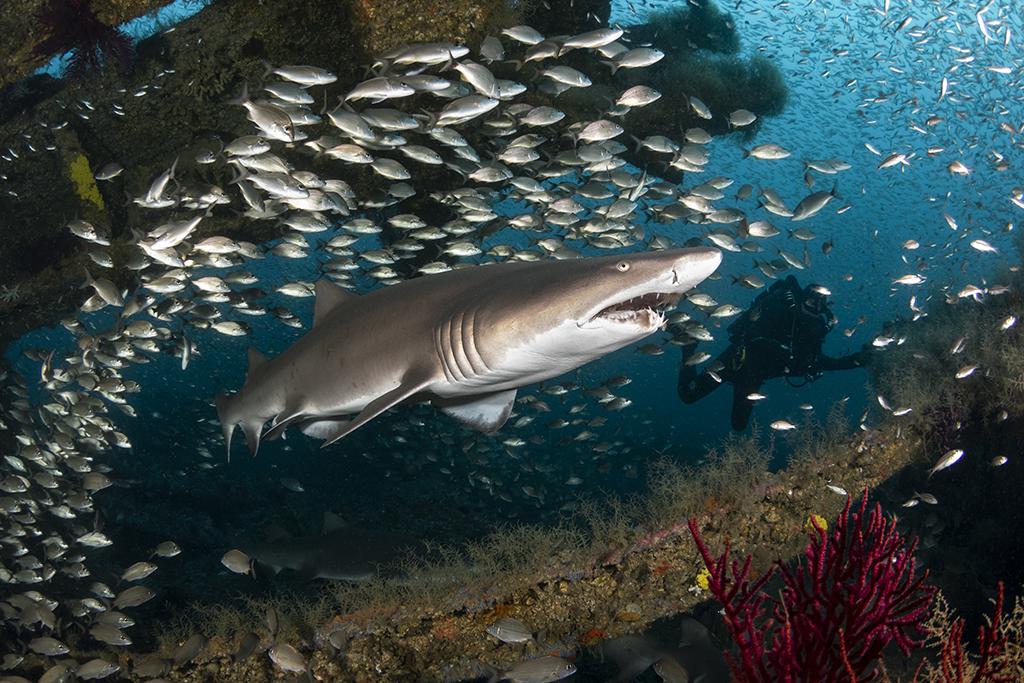
The depth of the wreck is not all too deep at just 90 feet to the sand, as opposed to 120 feet like the Papoose. The population of sand tigers on the Caribsea are not only more numerous than they are on other sites, they are noticeably bigger.
The only downside to the Caribsea, due to its position due east of Cape Lookout Shoals, the wreck rarely benefits from the clear Gulf Stream waters that flow a bit farther offshore. Underwater visibility at the site fluctuates widely from 20 feet to 100 feet, but most days expect between 30 and 60 feet.
From wolfpack to tigers
The reason for this site's draw to large aggregations of sand tigers isn't so much due to the actual structure of the wreck, but where it is positioned. One of the physical traits to the Carolina coasts underwater topography is that the sea floor from shoreline out some 50 miles is predominately made of sand and flat as a pancake.
As a result, anything that provides some form of structure, which is especially good for wrecks, is an oasis in a desert for everything from huge schools of baitfish on up to larger predators like jacks, groupers, greater barracuda, and of course sharks.
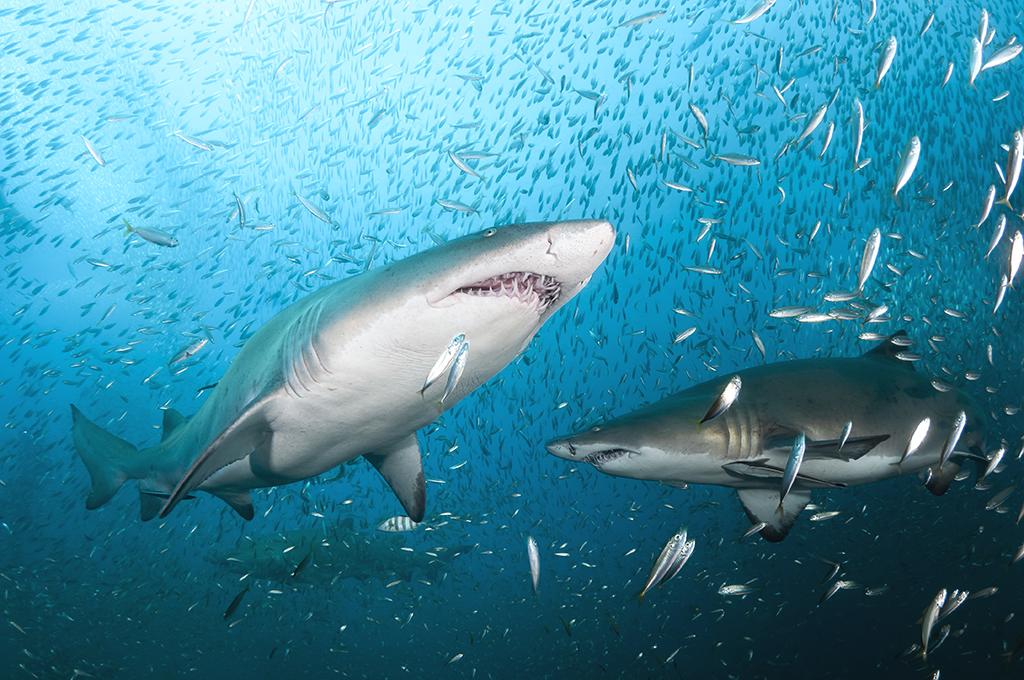
When the clarity is good, which I have encountered during a number of visits here, it is not all unusual to view anywhere from 50 to 90 sand tigers slowing cruising around the wreck. When you do, you also take note of something rather odd. Instead of actively moving about, the sharks also tend to hover near motionless in the water column. How can they do that?
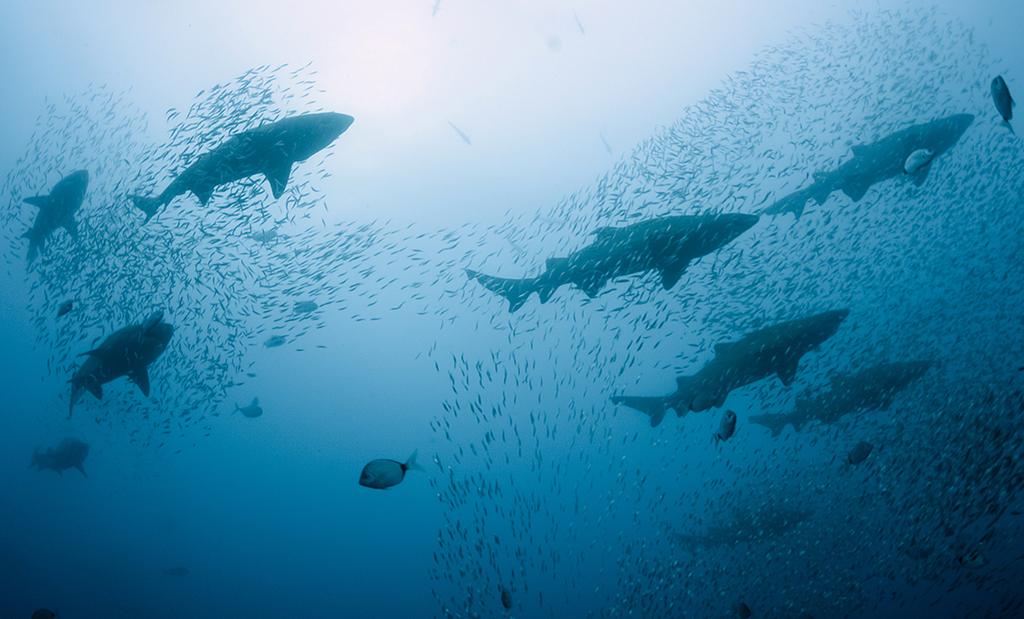
Here's the cool part about sand tigers. Like all sharks, sand tigers lack swim bladders (a gas filled internal organ found in bony fish) that can make them neutrally buoyant in the water. In place of one, they somehow developed a unique strategy to go to the surface and gulp air, which they hold in their stomach, in the same way you add air to your BCD, to make their dense bodies more neutral at depth. This also serves to explain what just happened should you see a sand tiger burp or fart as it meanders slowly past.
Interestingly, a common perception due to the animal’s lethargic mannerism as they travel through the water column using deliberately slow sweeps of the tail has fooled some into believing they are incapable of quick movements. Do something stupid like grab for their tail or spear a fish in their presence and you will find out how wrong that perception can be, as these sharks can in an instant go from 0 to 60.
But don’t take that as something to worry about. As many who have dived with these sharks will attest, sand tigers are actually somewhat of a pussycat as their behavior might display idle curiosity if not lean more on the side of indifferent.

On the subject of this shark’s choppers; when you see a sand tiger up close, with its tangle of sharp, spike-like, teeth hanging halfway of its mouth the phrase ‘a dentist’s worst nightmare’ comes to mind.
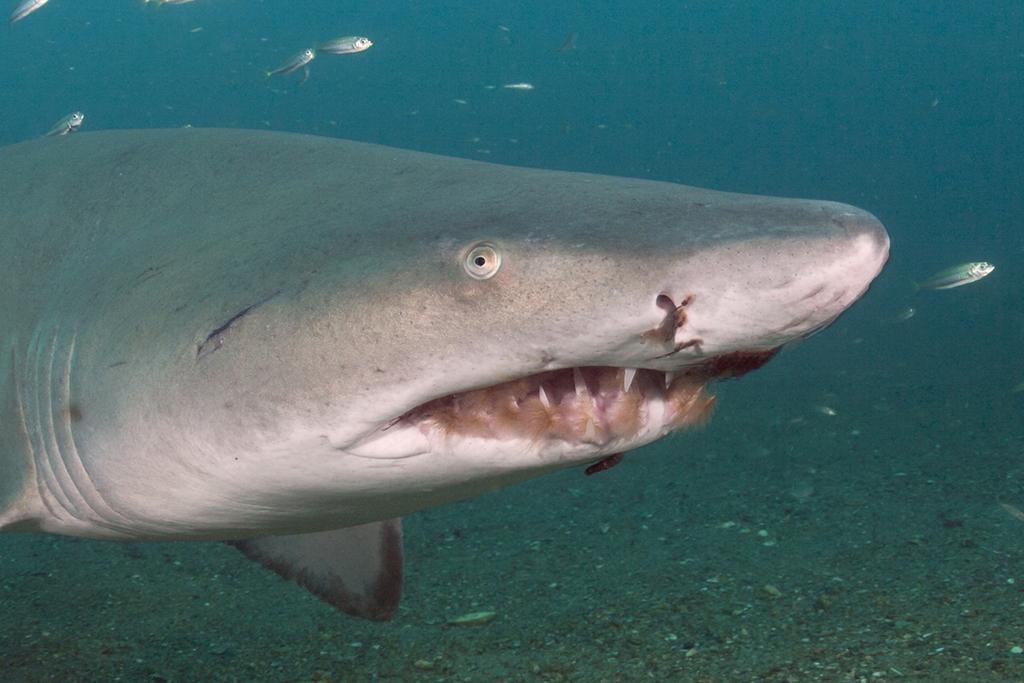
Seeing these sharks up close I have found their tangle of teeth is often suffused with clumps of algae, even the odd gooseneck barnacle hanging off a tooth here and there. As to why this species of shark has this form of mouth grunge going on when other species do not is a little bit of a mystery. Dentist nightmare nothing, let’s see what a dental hygienist would have say about performing a cleaning on that mouth.
Here’s a piece of advice should the desire include getting a few shots of their gnarly dental work up close: Making sudden or fast movements will likely drive them away. Instead, make your move as slow and deliberate as theirs. This way the shark is more apt to allow you to get really close providing that opportunity for an awesome portrait shot.
